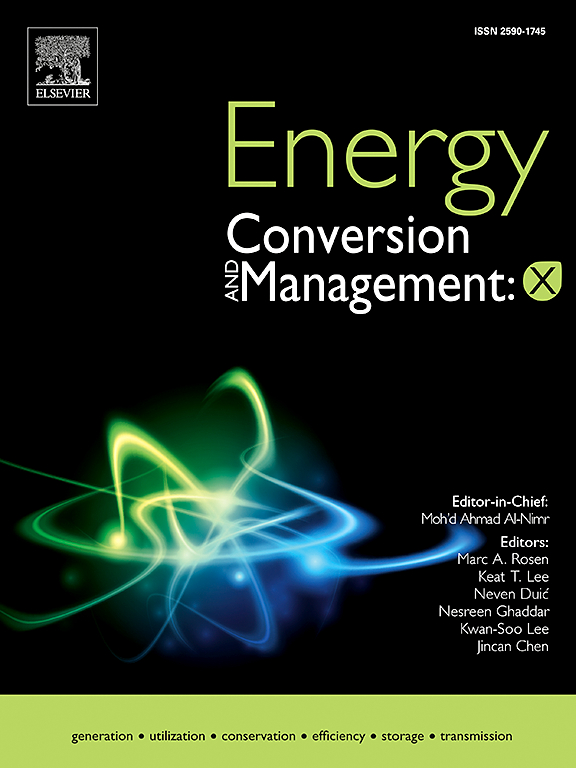Dynamic control of a 10 MW solar-autothermal hybrid biomass gasifier for round-the-clock processing with stable syngas production
IF 7.1
Q1 ENERGY & FUELS
引用次数: 0
Abstract
This study tackles the theoretical controllability of a hybrid solar-autothermal biomass gasifier, subject to dynamic variations of the solar power input, for round-the-clock operation. An industrial-scaled spouted bed reactor is considered, which can ensure the continuous conversion of 2 to 3 t/h of woody biomass particles. Insufficient solar power is dynamically counterbalanced by in situ oxy-combustion, to maintain the reaction temperature at 1200 K and the total H2 + CO flowrate production at 1000 NL/s. A Model Predictive Control (MPC) algorithm is thus implemented, and the feasibility of hybridized operation is demonstrated on a second-per-second basis. Daily and yearly performance results are achieved to discuss the relevance of several model assumptions and design choices, and a sensitivity analysis is proposed. In the region of Targasonne (French Pyrenees), hybridized gasification enables reducing biomass and O2 consumptions by 6.2 % and 19.5 %, respectively, as compared with autothermal gasification for the same gas flowrate production. The yearly solar heat share reaches 22 %, while a 7.2 % dumping of the solar heat available is necessary to avoid over-heating. Within this scope, higher H2 + CO production rates can only be achieved at the cost of lower solar heat shares but lower dumping rates, thus better utilization of the available solar resource. The feasibility of dynamic control of a solar-autothermal biomass gasifier was successfully demonstrated for the determination of annual process performance with reasonable computational costs, paving the way to stable and controllable solar gasification process operation.
求助全文
约1分钟内获得全文
求助全文
来源期刊

Energy Conversion and Management-X
Multiple-
CiteScore
8.80
自引率
3.20%
发文量
180
审稿时长
58 days
期刊介绍:
Energy Conversion and Management: X is the open access extension of the reputable journal Energy Conversion and Management, serving as a platform for interdisciplinary research on a wide array of critical energy subjects. The journal is dedicated to publishing original contributions and in-depth technical review articles that present groundbreaking research on topics spanning energy generation, utilization, conversion, storage, transmission, conservation, management, and sustainability.
The scope of Energy Conversion and Management: X encompasses various forms of energy, including mechanical, thermal, nuclear, chemical, electromagnetic, magnetic, and electric energy. It addresses all known energy resources, highlighting both conventional sources like fossil fuels and nuclear power, as well as renewable resources such as solar, biomass, hydro, wind, geothermal, and ocean energy.
 求助内容:
求助内容: 应助结果提醒方式:
应助结果提醒方式:


